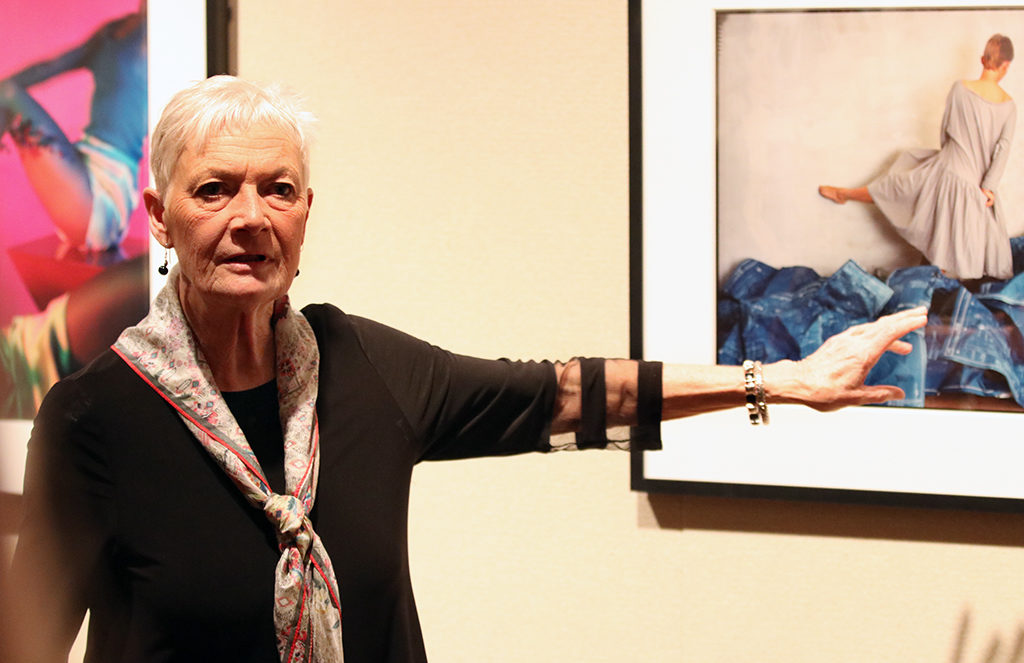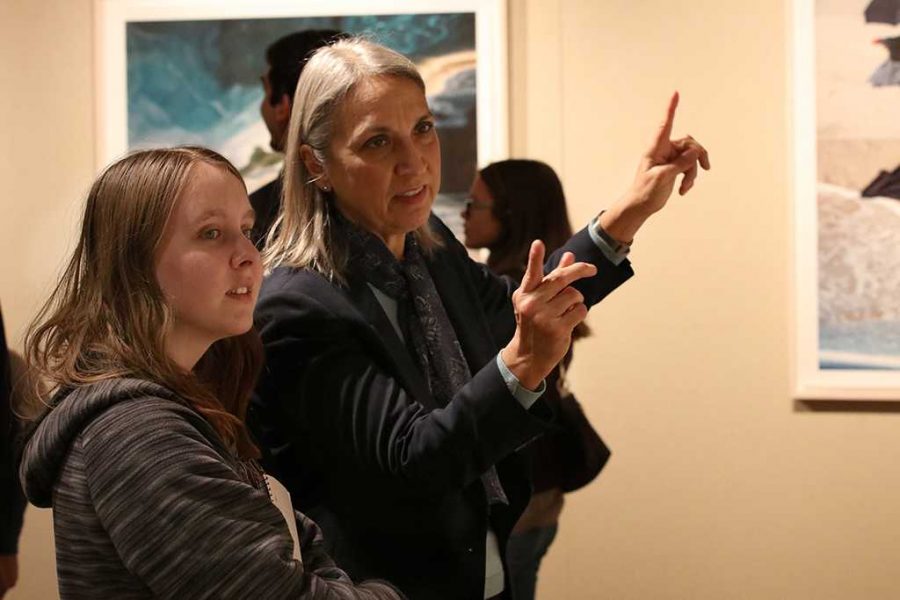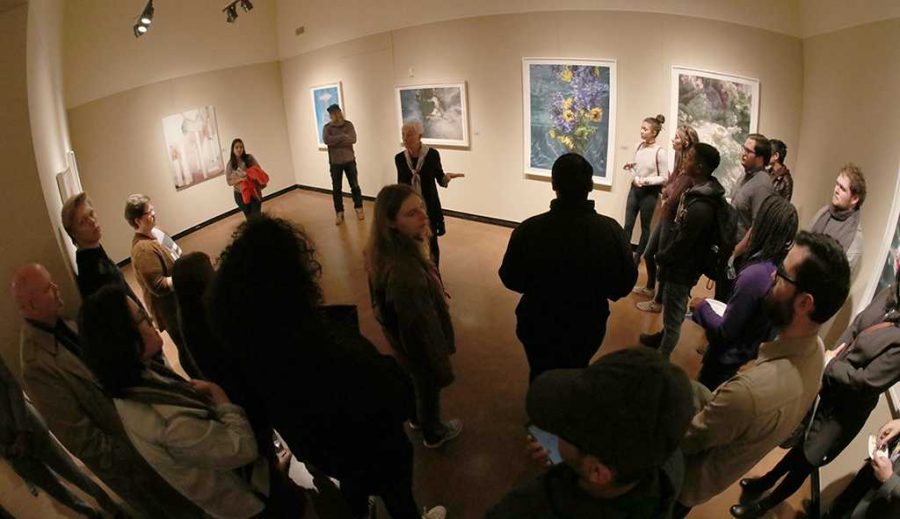Photographer engages with students about photography and art
Kenda North, Juanita Harvey Art Gallery guest artist, speaks about her work and the process for individual peices in her gallery during the opening reception, Friday, Feb. 2, 2018. Photo by Francisco Martinez
February 5, 2018
 Photographer Kenda North discussed her artwork with students in and outside of the classroom before the opening reception for her Retrospective Exhibition: “Seeing is a Nervous Habit.” Her reception showed a 40 year history of her photography.
Photographer Kenda North discussed her artwork with students in and outside of the classroom before the opening reception for her Retrospective Exhibition: “Seeing is a Nervous Habit.” Her reception showed a 40 year history of her photography.
“Kenda has been a very prominent figure in photography in the Dallas Fort Worth area for the last 30 years,” Gary Goldberg, gallery director and professor of photography, said.
While North was here on campus, she had the opportunity to visit with students and talk about their artwork. One class she visited was the photography class where she had Goldberg assign a project in which she critiqued with the students and challenged them with their own photography.
“She said you can’t be afraid to go out and take photos. You can’t be afraid to get close to people,” Sara Keeling, art senior, said.
Goldberg said it is good to have an artist as accomplished as North come and visit campus and get to talk to students.
“She has been very active as a photographer,” Goldberg said. “Her work has been shown all over the world in over 30 public collections.”
Goldberg also stated that it is a good thing for students to come see her exhibition because of the history it shows in color photography.
“If you look at the exhibition there’s also a small history of the evolution of color photography,” Goldberg said.

Ann Leimer, associate professor and chair of the art department, said when a student is in the presence of an experienced art maker it gives that student an opportunity to reflect upon how they make their own work and broadens their understanding of the art world.
“[It is] really important for a student to be exposed to a broad range of makers of art because it can provide inspiration, role models and deepen the students understanding of the possibilities of art,” Leimer said.
North said that it is beneficial for an outside artist to come to a school and give feedback on an art student’s work. It helps them become better. North has even admitted that she will still send her photos off to people to have them critiqued.
“I don’t know them. I don’t know their backgrounds. I don’t know their issues. I’m just looking at the work and can respond to it and that can be really beneficial,” North said about visiting art students.
North also gave a lecture to 38 people infighting them of who she is as an artist and the meaning behind some of her photos.
Kenda has worked in color her whole career as a photographer. At the beginning of her photography career, color was not a well accepted means to produce art, but she did it anyway.
“I have worked in color all of my career,” North said. “ I started working in color when color was really not accepted within photography.”
The graduating art seniors got the opportunity to speak with her about their work.
“Having a flesh and blood artist in front of you helps make art come alive for students,” Leimer said.
Students said they enjoyed coming to the opening gallery reception to see her photos and talking with her.
“With the water edition it’s really interesting how she combines her like of swimming and being in water and the tranquility effect you get,” Rachel Ross, art junior, said. “Her photos are truly unapologetically beautiful.”
For the students that were able to speak with North, they learned that in her early photography, when color was not widely accepted for art photography, she hand-created the colors that are in the photographs.
“I could invent the color. I mean I could invent the color of those blue jeans. I could think, ‘What do blue jeans look like?’ and create that.” North said. “That has always been an overriding interest.”
North said when she was creating the color for the early photographs, she would make the color for what she saw, not what was necessarily true.
“I could create, could make things look whatever I wanted to make them,” North said. “I mean I didn’t know if that woman had white hair, but she did for me.”
Students said they left either her lecture, her one-on-one critique or her gallery opening with a sense of accomplishment and encouragement.
“It shows me that there are a lot of different things I can do whenever I graduate and I shouldn’t limit myself to ‘I’m just going to be an artist,’” Ross said.



